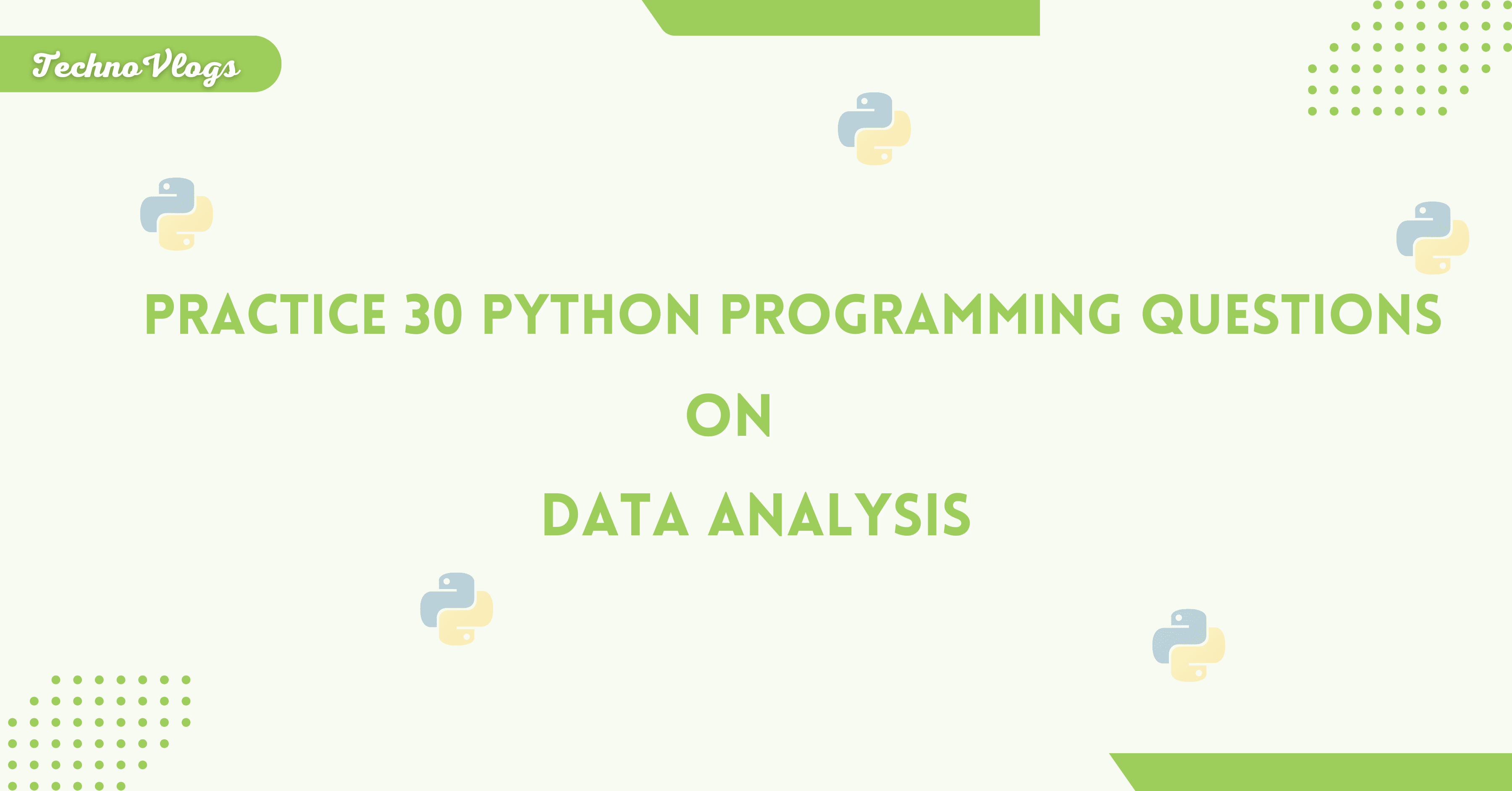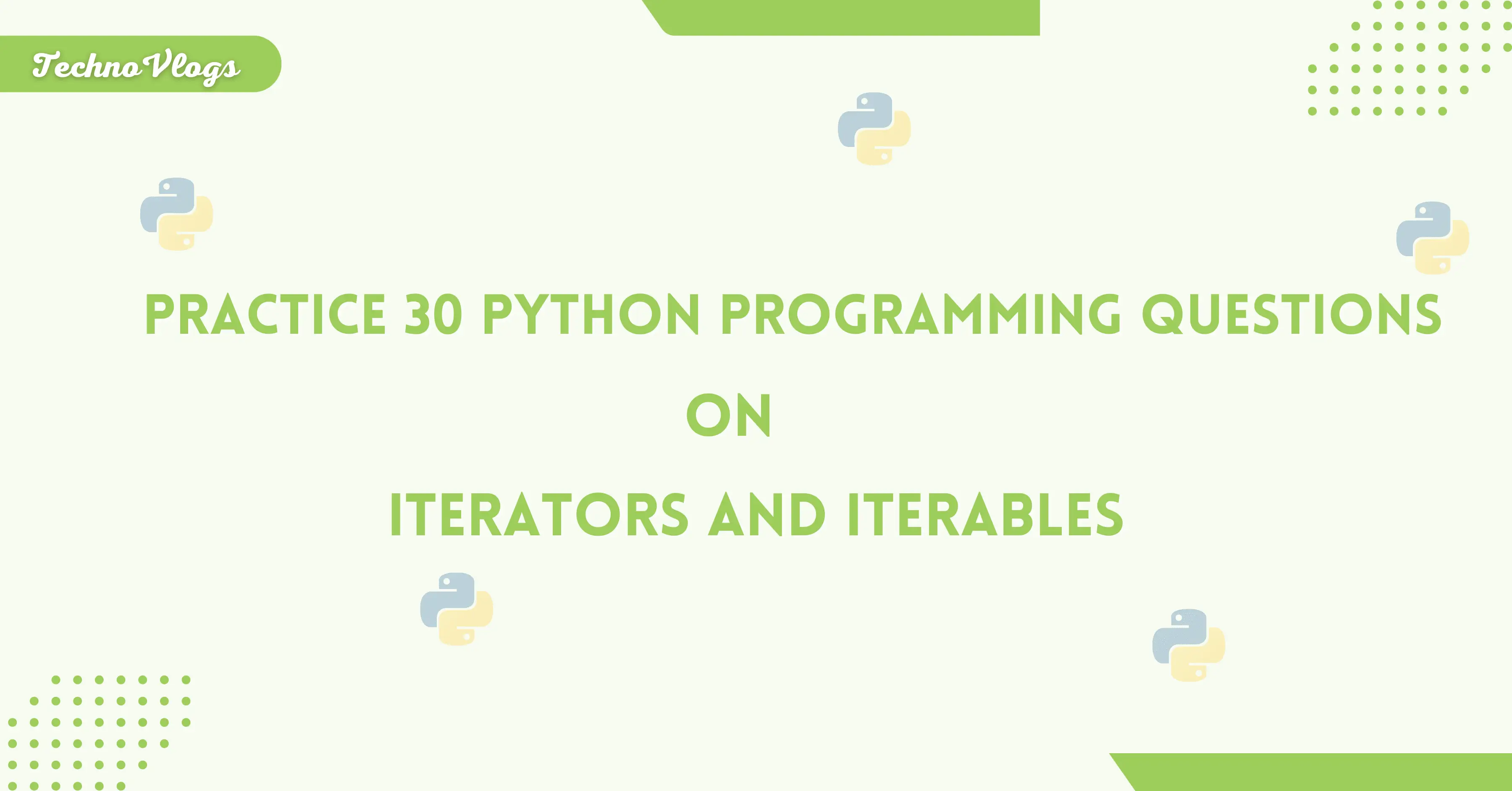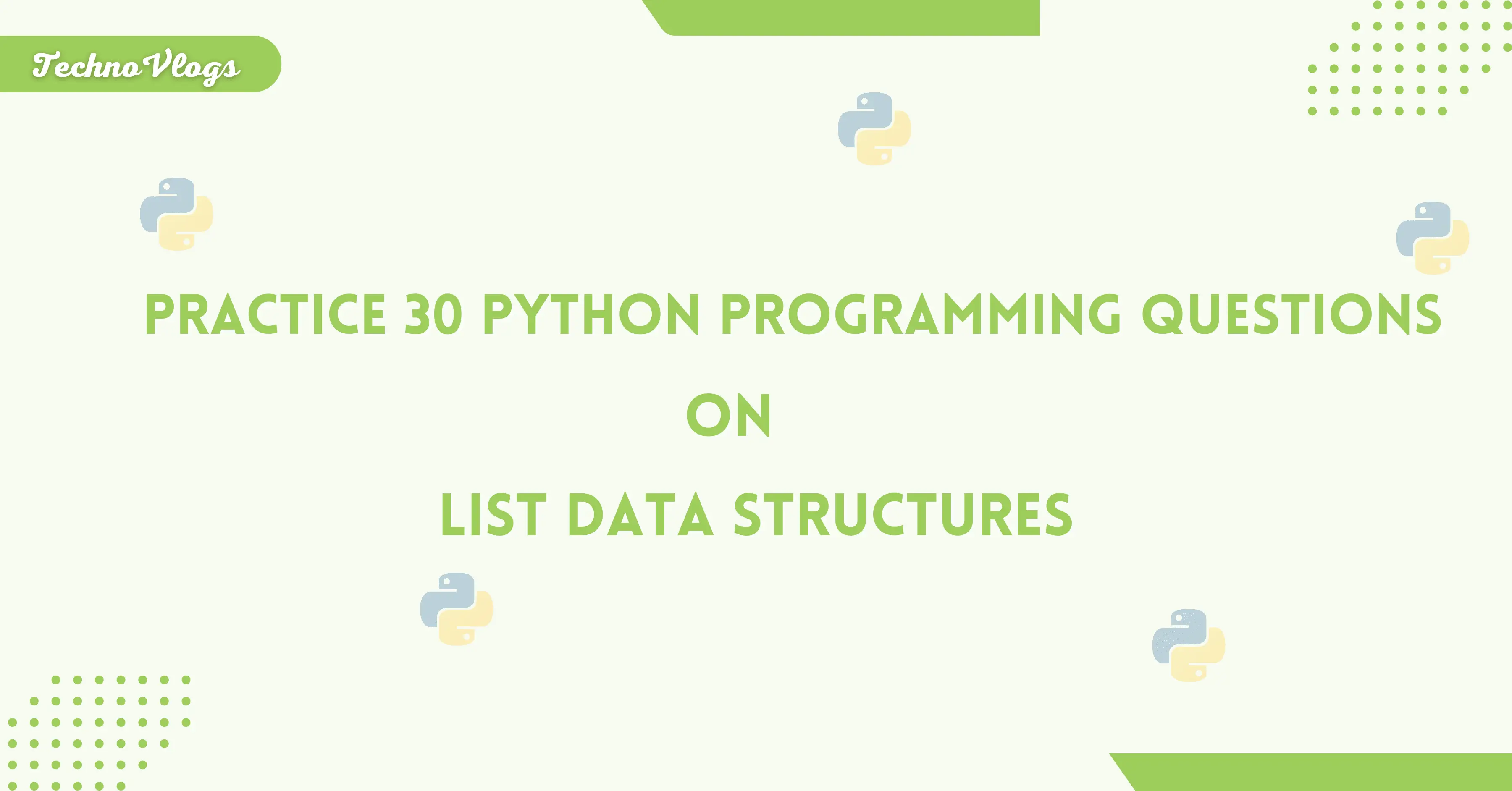
Practice Top 30 Python Programming Questions on Data Analysis
Q1. Create a DataFrame with columns Name, Age, and City.
Input: {'Name': ['Alice', 'Bob'], 'Age': [25, 30], 'City': ['NY', 'LA']}
Expected Output:
Name Age City
0 Alice 25 NY
1 Bob 30 LA
Q2. Read a CSV file data.csv and display the first 5 rows.
Input: CSV file with 10 rows and 3 columns.
Expected Output: First 5 rows of the DataFrame.
Q3. Filter rows where Age > 25.
Input: DataFrame:
Name Age City
0 Alice 25 NY
1 Bob 30 LA
Expected Output:
Name Age City
1 Bob 30 LA
Q4. Sort the DataFrame by the Age column in descending order.
Input: Same as above.
Expected Output:
Name Age City
1 Bob 30 LA
0 Alice 25 NY
Q5. Add a new column Salary with values [50000, 60000].
Input: Same DataFrame as above.
Expected Output:
Name Age City Salary
0 Alice 25 NY 50000
1 Bob 30 LA 60000
Q6. Drop the City column.
Input: Same DataFrame as above.
Expected Output:
Name Age Salary
0 Alice 25 50000
1 Bob 30 60000
Q7. Group by City and calculate the average Age.
Input:
Name Age City
0 Alice 25 NY
1 Bob 30 LA
2 Carol 35 NY
Expected Output:
City Avg_Age
0 LA 30
1 NY 30
Q8. Create a pivot table showing the average Age for each City.
Input: Same as above.
Expected Output:
City
LA 30
NY 30
Q9. Fill missing values in Age with the mean.
Input:
Name Age City
0 Alice 25.0 NY
1 Bob NaN LA
2 Carol 35.0 NY
Expected Output:
Name Age City
0 Alice 25.0 NY
1 Bob 30.0 LA
2 Carol 35.0 NY
Q10. Save the DataFrame to a CSV file named output.csv.
Input: DataFrame as above.
Expected Output: A file output.csv.
Q11. Plot a line graph of x=[1, 2, 3] and y=[2, 4, 6].
Input: x and y arrays.
Expected Output: A line plot.
Q12. Plot a bar chart of Categories=['A', 'B', 'C'] and Values=[5, 7, 3].
Input: Lists.
Expected Output: A bar plot with three bars.
Q13. Create a scatter plot with x=[1, 2, 3] and y=[3, 5, 7].
Input: Lists.
Expected Output: A scatter plot.
Q14. Plot a histogram for the data [1, 2, 2, 3, 3, 3, 4].
Input: List.
Expected Output: A histogram with frequency counts.
Q15. Plot a heatmap for a DataFrame [[1, 2], [3, 4]].
Input: DataFrame.
Expected Output: A heatmap.
Q16. Add labels and a title to a line plot.
Input: x=[1, 2], y=[2, 4].
Expected Output: A line plot with title and labels.
Q17. Save a bar chart as chart.png.
Input: Bar chart.
Expected Output: chart.png saved.
Q18. Plot a pie chart for categories [A, B, C] with values [30, 50, 20].
Input: Lists.
Expected Output: A pie chart.
Q19. Create a pairplot for a DataFrame with sepal_length, sepal_width.
Input: DataFrame.
Expected Output: Pairplot visualizing relationships.
Q20. Create a boxplot for a DataFrame column.
Input: [1, 2, 3, 4, 5, 6].
Expected Output: A boxplot.
Q21. Create a 1D array [1, 2, 3, 4].
Input: [1, 2, 3, 4].
Expected Output: array([1, 2, 3, 4]).
Q22. Create a 2D matrix [[1, 2], [3, 4]].
Input: Matrix elements.
Expected Output:
array([[1, 2],
[3, 4]])
Q23. Multiply each element of [1, 2, 3] by 2.
Input: [1, 2, 3].
Expected Output: [2, 4, 6].
Q24. Find the mean of [10, 20, 30].
Input: [10, 20, 30].
Expected Output: 20.0.
Q25. Compute the sum of elements in [1, 2, 3, 4].
Input: [1, 2, 3, 4].
Expected Output: 10.
Q26. Reshape [1, 2, 3, 4] into a 2x2 matrix.
Input: [1, 2, 3, 4].
Expected Output:
array([[1, 2],
[3, 4]])
Q27. Generate 5 random numbers between 0 and 1.
Input: None.
Expected Output: Array of 5 random numbers.
Q28. Transpose the matrix [[1, 2], [3, 4]].
Expected Output:
array([[1, 3],
[2, 4]])
Q29. Compute the dot product of [1, 2] and [3, 4].
Input: Two arrays.
Expected Output: 11.
Q30. Add [1, 2, 3] to [4, 5, 6].
Input: Two arrays.
Expected Output: [5, 7, 9].

Bikki Singh
Hi, I am the instructor of TechnoVlogs. I have a strong love for programming and enjoy teaching through practical examples. I made this site to help people improve their coding skills by solving real-world problems. With years of experience, my goal is to make learning programming easy and fun for everyone. Let's learn and grow together!























